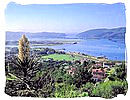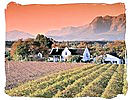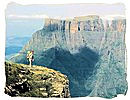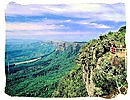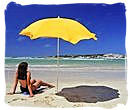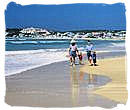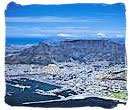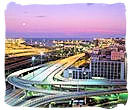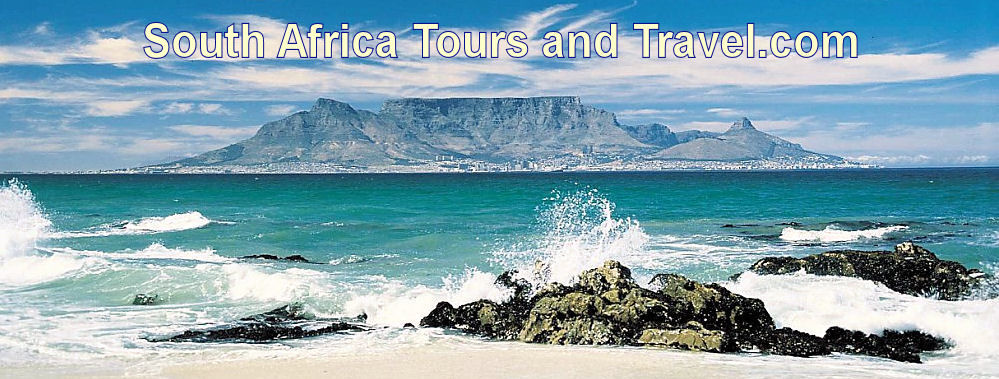 |
||
Discover the spectacular beauty of South AfricaSouth Africa is most renowned for what has become its unofficial national symbol, the famous Table Mountain in Cape Town. But there is so much more to this country. Locals have always known it and the rest of the world is slowly coming to the party, realizing that South Africa is one of the most breathtaking places on earth.
Its beautiful landscape is blessed with a wide-ranging, bio-diverse natural habitat, comprising awe-inspiring mountain ranges, indigo coloured hills enveloped in Fynbos, blue lagoons, wide expanses of African savannah, indigenous forests, stunning beaches, desolate deserts and spectacular river canyons. South Africa's natural beauty is practically unmatched. Thanks to its diversity, the country promises to enthrall young and old alike. No matter if you are thrill-seeking adrenaline junkie or a cultural explorer of the "rainbow nation", there is an abundance of attractions and activities to appeal to everyone's tastes. Indulging in the quintessential safari and tracking the fabled Big Five, soaking up the sun on the golden coast, sampling world class wines along the wine route, or exploring the cultural hotchpotch of the city centers and many more. The opportunities are endless. South Africa's beauty is complimented by its pleasant climate, making it an all year-round destination. Days are typically warm and sunny, and the winter is short. As opposed to the northern hemisphere, summer runs from November to February. If game viewing is what you are after, the best time is early spring, but if a sun filled beach break sounds more like you, than October to late November would be the right time to head for the coast. Local merry-makers stream out of the city en-masse towards mid-December, so popular destinations, hotels and resorts will be heavily booked at that time. You need not look further than the following destinations, to name but a few, to really appreciate South Africa's beautiful scenery;
The word "Fynbos" is a Dutch word that describes the shrub and heath-like
vegetation that forms part of the Cape Floral Kingdom. Comprising over 9000 species of plants of
which approximately 6200 are endemic, it is the smallest of the six floral kingdoms world-wide.
It is unique for its particularly high diversity and also for the fact that it is only to be found
in the Eastern and Western cape provinces of South Africa where it grows in a 100 to 200km wide
coastal area stretching from Port Elizabeth on the east coast to Clanwilliam on the west
coast.
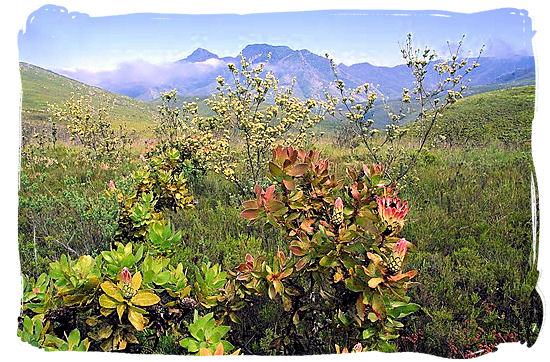
 The word "Fynbos" is a Dutch word that describes the shrub and heath-like
vegetation that forms part of the Cape Floral Kingdom. Comprising over 9000 species of plants of
which approximately 6200 are endemic, it is the smallest of the six floral kingdoms world-wide.
It is unique for its particularly high diversity and also for the fact that it is only to be found
in the Eastern and Western cape provinces of South Africa where it grows in a 100 to 200km wide
coastal area stretching from Port Elizabeth on the east coast to Clanwilliam on the west
coast.
The word "Fynbos" is a Dutch word that describes the shrub and heath-like
vegetation that forms part of the Cape Floral Kingdom. Comprising over 9000 species of plants of
which approximately 6200 are endemic, it is the smallest of the six floral kingdoms world-wide.
It is unique for its particularly high diversity and also for the fact that it is only to be found
in the Eastern and Western cape provinces of South Africa where it grows in a 100 to 200km wide
coastal area stretching from Port Elizabeth on the east coast to Clanwilliam on the west
coast.copyright © South African Tourism The Garden RouteThe Garden Route Stretches for some 200 kilometers. along the Eastern Cape province's coast line. It is one of the most naturally diverse of South Africa's nine provinces and also one of its most popular tourist destinations and it is not difficult to see why. Sided by the Indian Ocean to the south and the Outeniqua Mountains to the north, the Garden Route is one of South Africa's top scenic highlights. Starting at Mossel bay and ending at Storms river, the route includes attractions such as Oudtshoorn, Wilderness, Knysna, Plettenberg Bay, Tsitsikamma nature reserve, Nature's Valley and Storms River among many others. The stunning scenery of mountains huddling close to a sea shore featuring numerous beaches and lagoons, tall indigenous forests and gold coloured lakes will delight your eye.
Knysna is a relatively small town situated along one of South Africa's
natural wonders, the renowned Garden Route. The town is famous for its large warm-water estuary,
the Knysna Lagoon. Opening to the sea through a narrow passage between two towering sandstone
headlands called the "Knysna Heads", the lagoon is formed by 5 rivers flowing into it from the
surrounding Outeniqua mountains.
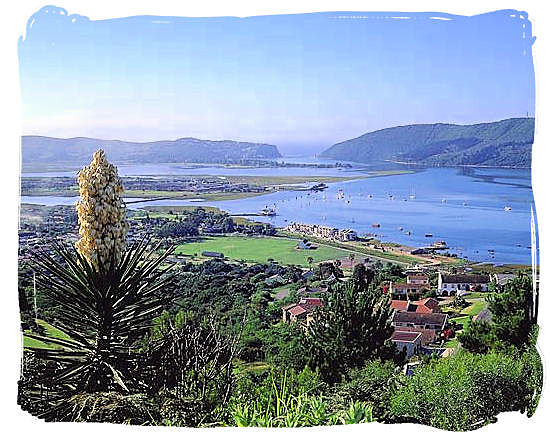
 Knysna is a relatively small town situated along one of South Africa's
natural wonders, the renowned Garden Route. The town is famous for its large warm-water estuary,
the Knysna Lagoon. Opening to the sea through a narrow passage between two towering sandstone
headlands called the "Knysna Heads", the lagoon is formed by 5 rivers flowing into it from the
surrounding Outeniqua mountains.
Knysna is a relatively small town situated along one of South Africa's
natural wonders, the renowned Garden Route. The town is famous for its large warm-water estuary,
the Knysna Lagoon. Opening to the sea through a narrow passage between two towering sandstone
headlands called the "Knysna Heads", the lagoon is formed by 5 rivers flowing into it from the
surrounding Outeniqua mountains.copyright © South African Tourism The Cape WinelandsCape Town is the beautiful playground of the rich and famous; both local and international celebrities favor the sandy beaches, while Table Mountain is a major attraction in itself. It is the place to be for whale watching, world class shopping and a rocking nightlife. Mere kilometers outside the bustling center, you will find the golden vineyards where you can easily wile away weeks sampling the best the country has to offer.
Interspersed with range upon range of beautiful mountains and peaks with
spacious green valley's in between, the Western Cape's wine producing regions extend from the Cape
Overberg in the south-west of the Western cape province up north through the Boland region and
along the west coast as far as the Northern Cape province. One of the regions are the famous Cape
Winelands, nowadays a municipality which boundaries coincide more or less with the area that is
probably better known by South Africans as "The Boland". With Stellenbosch, Franschhoek, Paarl
and Wellington as its major centers, the area's 18 official wine routes are among the most scenic
in the world.
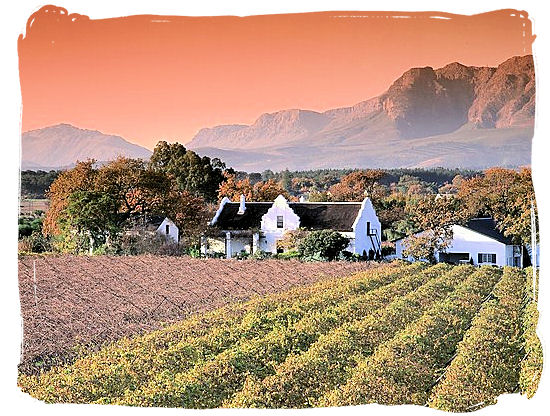
 Interspersed with range upon range of beautiful mountains and peaks with
spacious green valley's in between, the Western Cape's wine producing regions extend from the Cape
Overberg in the south-west of the Western cape province up north through the Boland region and
along the west coast as far as the Northern Cape province. One of the regions are the famous Cape
Winelands, nowadays a municipality which boundaries coincide more or less with the area that is
probably better known by South Africans as "The Boland". With Stellenbosch, Franschhoek, Paarl
and Wellington as its major centers, the area's 18 official wine routes are among the most scenic
in the world.
Interspersed with range upon range of beautiful mountains and peaks with
spacious green valley's in between, the Western Cape's wine producing regions extend from the Cape
Overberg in the south-west of the Western cape province up north through the Boland region and
along the west coast as far as the Northern Cape province. One of the regions are the famous Cape
Winelands, nowadays a municipality which boundaries coincide more or less with the area that is
probably better known by South Africans as "The Boland". With Stellenbosch, Franschhoek, Paarl
and Wellington as its major centers, the area's 18 official wine routes are among the most scenic
in the world.copyright © South African Tourism KwaZulu-NatalKnown as the Zulu Kingdom, Kwazulu Natal (meaning "where the earth and ocean meet") is situated in the east of the country, with the towering green Drakensberg mountain range ts western border, and the warm Indian Ocean lapping at the exotic coastline on its eastern border. In between you will encounter a subtropical lush and green environment of vast and luxuriant banana plantations, strikingly blue lagoons and green rolling hills. The coastline north of Durban known as the north coast, or more popularly, the Dolphin Coast, stretches from Zimbali right up to the largest river in the province, the Tugela river. It is famous for its glorious Indian Ocean beaches, and the many sightings of large pods of bottlenose dolphins cavorting in and beyond the breaking waves of the surf. South of Durban the province's coast line is called the South Coast. Although the two stretches of coastline may have rather unimaginative names they are, especially in terms of beauty and scenery, two top destinations in South Africa, locally as well as internationally. The South Coast stretches from Durban right down to where the Eastern cape's Wild Coast begins. It is a highly favored holiday destination by South Africans.
Durban's famous "Golden Mile" is an approximately 6 km long beachfront right
between the city center and the Indian Ocean that stretches roughly from Entertainment World
Suncoast Casino at the northern end of the "Mile" to uShaka Marine World at South Beach. Combined
with its sun-drenched climate warm Indian Ocean waters, it is one of Durban's most popular tourism
drawing cards, offering a host of attractions for swimmers, and sun-worshippers alike.
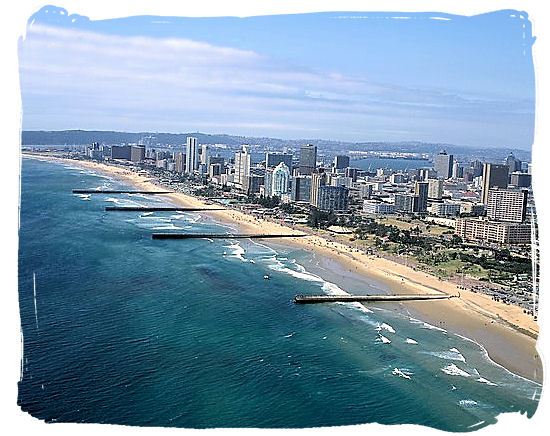
 Durban's famous "Golden Mile" is an approximately 6 km long beachfront right
between the city center and the Indian Ocean that stretches roughly from Entertainment World
Suncoast Casino at the northern end of the "Mile" to uShaka Marine World at South Beach. Combined
with its sun-drenched climate warm Indian Ocean waters, it is one of Durban's most popular tourism
drawing cards, offering a host of attractions for swimmers, surfers and sun-worshipers
alike.
Durban's famous "Golden Mile" is an approximately 6 km long beachfront right
between the city center and the Indian Ocean that stretches roughly from Entertainment World
Suncoast Casino at the northern end of the "Mile" to uShaka Marine World at South Beach. Combined
with its sun-drenched climate warm Indian Ocean waters, it is one of Durban's most popular tourism
drawing cards, offering a host of attractions for swimmers, surfers and sun-worshipers
alike.copyright © South African Tourism MpumalangaMpumalanga, as it is called in the local Swazi and Zulu languages, means "the place where the sun rises", referring to its location on the eastern border of the country. Also known as "Paradise Country", this region of South Africa is one of its top tourist destinations, offering spectacular scenic beauty and an abundance of wildlife. Home to touristic icons such as the panorama route with its escarpment and the Lowveld with the Kruger National Park and a host of private game reserves, you will encounter overwhelming beauty of a magnitude that no travel magazine or brochure can prepare you for. Entering from Lydenburg via the Long Tom pass or from Nelspruit via White River, the Panorama Route basically starts at Sabie and runs along the escarpment that forms the great divide between the Highveld and the Lowveld via Graskop, ending at the crossing where it joins the road that goes to the Abel Erasmus pass and the Strydom tunnel. The spectacular views and natural wonders that you will experience range from Cascading waterfalls to Impressive mountain gorges and spectacular views. Well known highlights along the route are the Mac Mac, Lisbon and Berlin waterfalls, The Pinnacle, Bourke's Luck Potholes, The three Rondawels, Gods Window, Wonder View and Blyde River Canyon. Continuing with the Panorama Route over the Abel Erasmus pass and through the Strydom tunnel, you enter Mpumalanga's Lowveld. Part of one of the biggest wildlife regions, it is home to the world renown Kruger National Park, South Africa's largest nature reserve, boasting stunning savannah scenery and thrilling wildlife experiences.
Situated in the most southern part of the Blyde River Canyon Nature Reserve,
God's Window is the most well-known one of a number of lookout vantage points along Mpumalanga
province's Drakensberg escarpment. At this point the escarpment plunges almost vertically more
than 700 meters down to the Lowveld, offering a spectacular panorama of forest and savannah. It
is one of the scenic natural wonders of Mpumalanga's panorama route.
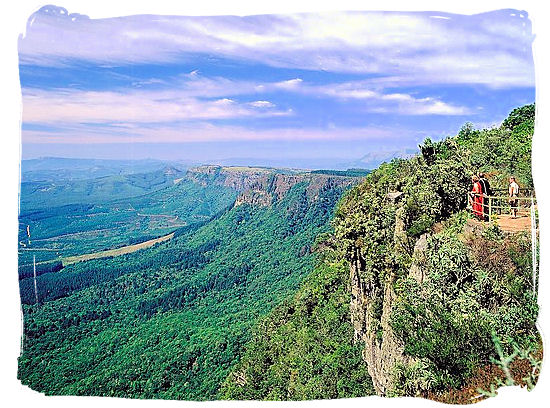
 Situated in the most southern part of the Blyde River Canyon Nature Reserve,
God's Window is the most well-known one of a number of lookout vantage points along Mpumalanga
province's Drakensberg escarpment. At this point the escarpment plunges almost vertically more
than 700 meters down to the Lowveld, offering a spectacular panorama of forest and savannah. It
is one of the scenic natural wonders of Mpumalanga's panorama route.
Situated in the most southern part of the Blyde River Canyon Nature Reserve,
God's Window is the most well-known one of a number of lookout vantage points along Mpumalanga
province's Drakensberg escarpment. At this point the escarpment plunges almost vertically more
than 700 meters down to the Lowveld, offering a spectacular panorama of forest and savannah. It
is one of the scenic natural wonders of Mpumalanga's panorama route.copyright © South African Tourism Picture Gallery
A golden sunset in the in the middle of the African bushveld is a
breathtakingly magic experience. Just imagine yourself at the end of a day full of exciting
wildlife encounters, contemplating the day's happenings, enjoying your sundowner's, watching the
sun go down over the bushveld. Utter bliss.
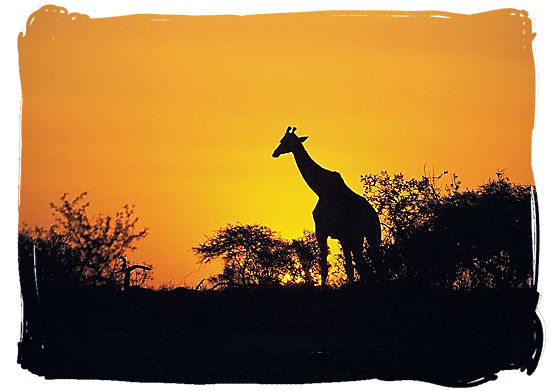
 A golden sunset in the in the middle of the African bushveld is a
breathtakingly magic experience. Just imagine yourself at the end of a day full of exciting
wildlife encounters, contemplating the day's happenings, enjoying your sundowner's, watching the
sun go down over the bushveld. Utter bliss.
A golden sunset in the in the middle of the African bushveld is a
breathtakingly magic experience. Just imagine yourself at the end of a day full of exciting
wildlife encounters, contemplating the day's happenings, enjoying your sundowner's, watching the
sun go down over the bushveld. Utter bliss.copyright © South African Tourism
"Devil's Tooth" (the pinnacle in the gap on the picture) is a jagged 2941
meters high peak which is situated at the southern end of the Amphitheater, a renowned mountain
formation in the Royal National Park of KwaZulu-Natal's Drakensberg mountain region. It is known
by mountaineers as one of the "Berg's" most dangerous climbs.
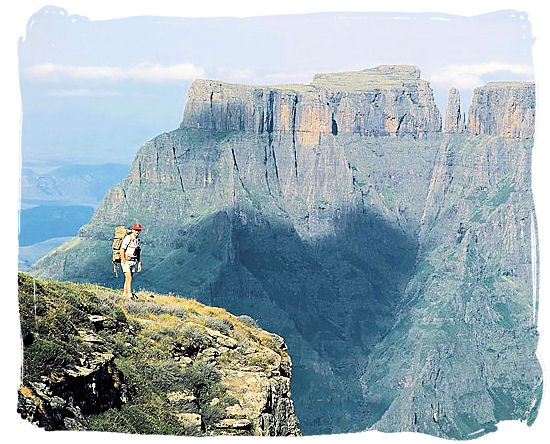
 "Devil's Tooth" (the pinnacle in the gap on the picture) is a jagged 2941
meters high peak which is situated at the southern end of the Amphitheater, a renowned mountain
formation in the Royal National Park of KwaZulu-Natal's Drakensberg mountain region. It is known
by mountaineers as one of the "Berg's" most dangerous climbs.
"Devil's Tooth" (the pinnacle in the gap on the picture) is a jagged 2941
meters high peak which is situated at the southern end of the Amphitheater, a renowned mountain
formation in the Royal National Park of KwaZulu-Natal's Drakensberg mountain region. It is known
by mountaineers as one of the "Berg's" most dangerous climbs.copyright © South African Tourism
The world renowned Table Mountain, flanked by Lion's Head and Devil's Peak
is without doubt the most iconic landmark of South Africa. Elected as one of the new 7 wonders of
nature in the world in 2007, it towers 1086 meters over the city of Cape Town. You cannot miss it.
Whether you come by car, train, plane or across the sea, it is the first thing you see long before
you reach the city. From the top it offers the most stunning panoramas of the city and the Cape
Peninsula.
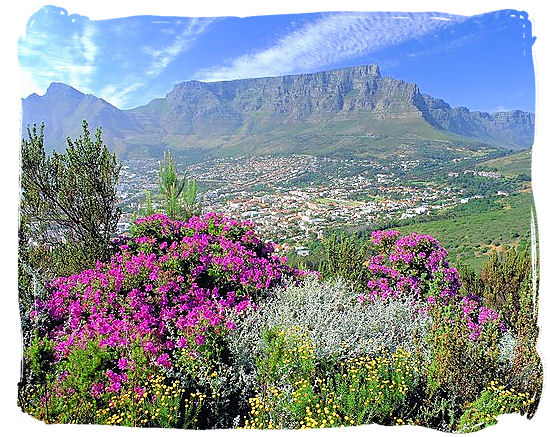
 The world renowned Table Mountain, flanked by Lion's Head and Devil's Peak
is without doubt the most iconic landmark of South Africa. Elected as one of the new 7 wonders of
nature in the world in 2007, it towers 1086 meters over the city of Cape Town. You cannot miss it.
Whether you come by car, train, plane or across the sea, it is the first thing you see long before
you reach the city. From the top it offers the most stunning panoramas of the city and the Cape
Peninsula.
The world renowned Table Mountain, flanked by Lion's Head and Devil's Peak
is without doubt the most iconic landmark of South Africa. Elected as one of the new 7 wonders of
nature in the world in 2007, it towers 1086 meters over the city of Cape Town. You cannot miss it.
Whether you come by car, train, plane or across the sea, it is the first thing you see long before
you reach the city. From the top it offers the most stunning panoramas of the city and the Cape
Peninsula.copyright © South African Tourism
Straddling the Orange River border with Namibia, the Ai-|Ais/Richtersveld
Transfrontier Park was established by combining the Richtersveld National Park in South Africa
and the ?Ai-?Ais Hot Springs Game Park in Namibia. It covers an area of 5920 sq km, comprising
some of the most dramatic and spectacular desert mountain landscapes in the world. With part of
it declared a UNESCO World Heritage Site and home to the most abundant succulent flora on earth
and the second largest canyon in the world, the Fish River Canyon, it is also the home ground of
one of the last surviving KhoiKhoi tribes, the Nama people.
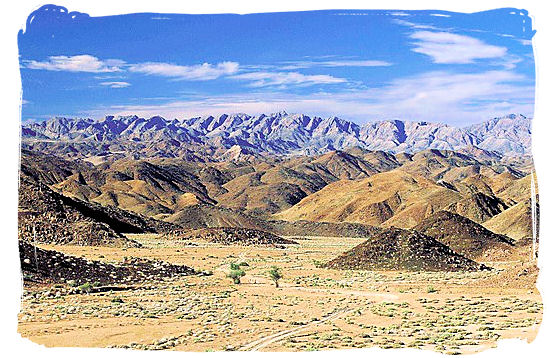
 Straddling the Orange River border with Namibia, the Ai-|Ais/Richtersveld
Transfrontier Park was established by combining the Richtersveld National Park in South Africa
and the ?Ai-?Ais Hot Springs Game Park in Namibia. It covers an area of 5920 sq km, comprising
some of the most dramatic and spectacular desert mountain landscapes in the world. With part of
it declared a UNESCO World Heritage Site and home to the most abundant succulent flora on earth
and the second largest canyon in the world, the Fish River Canyon, it is also the home ground of
one of the last surviving indigenous KhoiKhoi tribes, the Nama people.
Straddling the Orange River border with Namibia, the Ai-|Ais/Richtersveld
Transfrontier Park was established by combining the Richtersveld National Park in South Africa
and the ?Ai-?Ais Hot Springs Game Park in Namibia. It covers an area of 5920 sq km, comprising
some of the most dramatic and spectacular desert mountain landscapes in the world. With part of
it declared a UNESCO World Heritage Site and home to the most abundant succulent flora on earth
and the second largest canyon in the world, the Fish River Canyon, it is also the home ground of
one of the last surviving indigenous KhoiKhoi tribes, the Nama people.copyright © South African Tourism
Home ground to one of the largest of the indigenous KhoiKhoi tribes, the
Nama people, Namaqualand is a vast, desolate and arid area of roughly 440,000 sq km situated in
the north-west corner of the Northern Cape province that extends the Orange River border into
Namibia. Once a year, mainly during August and September, this region undergoes an incredible
transformation when it explodes into a kaleidoscope of colors in the form of fields upon fields
of the most beautiful flowers in a wide variety of species. A spectacular natural wonder that is
certainly a sight to be seen.
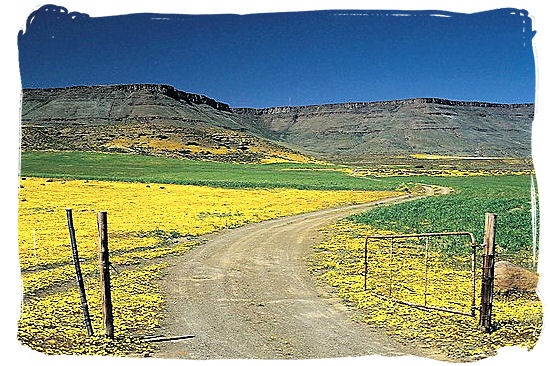
 Home ground to one of the largest of the indigenous KhoiKhoi tribes, the
Nama people, Namaqualand is a vast, desolate and arid area of roughly 440,000 sq km situated in
the north-west corner of the Northern Cape province that extends the Orange River border into
Namibia. Once a year, mainly during August and September, this region undergoes an incredible
transformation when it explodes into a kaleidoscope of colors in the form of fields upon fields
of the most beautiful flowers in a wide variety of species. A spectacular natural wonder that is
certainly a sight to be seen.
Home ground to one of the largest of the indigenous KhoiKhoi tribes, the
Nama people, Namaqualand is a vast, desolate and arid area of roughly 440,000 sq km situated in
the north-west corner of the Northern Cape province that extends the Orange River border into
Namibia. Once a year, mainly during August and September, this region undergoes an incredible
transformation when it explodes into a kaleidoscope of colors in the form of fields upon fields
of the most beautiful flowers in a wide variety of species. A spectacular natural wonder that is
certainly a sight to be seen.copyright © South African Tourism Video GalleryA video showing you the highlights of South Africa's beauty and attractions. Impressions and highlights to help you discover the natural beauty and awesome attractions of Cape Town and the surrounding Cape Peninsula. Discover spectacular South Africa, the place where miracles happen. Blessed with a large abundance of wildlife and a vast array of natural wonders the country is ranked 6th among the world's 17 most diverse countries. There are two ways of looking at the iconic Table Mountain in Cape Town, either from the bottom up or from the top down. Its famous Cable Way will take you up to the 1,067 meters high top, from where you can enjoy the most fantastic panoramas. Irrespective of whether you have a preference for tracking the Big Five, frolicking in the blue waters of the Indian Ocean, experiencing the history and culture of our "Rainbow Nation", hiking along the seashores or in the mountains, indulging in good food and wine, seeing multitudes of wild flowers, or merely just idling around in the sun, you will experience breathtaking beauty and scenery everywhere. Top of Page |
|
|
|
|
||
